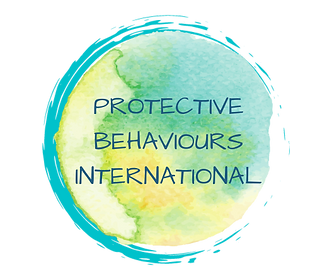Safety in relationships and the power of co-regulation
- Bronwyn Clee
- Sep 22
- 4 min read
Welcome back to the Blog series: "Feeling Safe and Standing Strong" Blog four of ten. This week's focus is on safety in relationships, and I don't just mean romantic relationships. I mean the safety we feel or don't feel with friends, colleagues, family members, even in passing interactions.
You see, the truth is our sense of safety is deeply influenced by the people around us. We as humans are hardwired for connection, and when connection feels steady and trustworthy, guess what? Our nervous systems can relax. But when it doesn't, we can find ourselves guarded, tense, or even sensing shutdown.
So let's talk about co-regulation. You might have heard that term bouncing around and wondered what it means. Well, co-regulation is when our nervous system and someone else's nervous system sync up. Yep, that's right, they synchronise. It's why we might instantly feel calmer around certain people or, conversely, more on edge around others. It's not about dependency; this is about the natural give-and-take of human interaction.
When we feel seen, heard, and respected, we feel valued, and our body interprets this as a sense of safety.

When we feel dismissed or judged, our body might prepare for self-protection, even if no words are spoken. Within Universal Protective Behaviours, safety isn't just about the environment; it's about how we experience ourselves within the environment. Let me say that again, as it deserves to be repeated.
Safety isn't just about the environment; it's about how we experience ourselves in the environment.
If we're in a workplace, home, or community setting where we feel like we can't be ourselves, our nervous system will remain on high alert. Over time, that constant alertness can leave us feeling drained, irritable, or even disconnected.
Conversely, when we share spaces with people who are consistently respectful and kind, our system learns that it can stand down and relax it's guard. And guess what? We then have more energy for creativity, pleasure, problem-solving, and joy. And who doesn't want more of that?
Let's take a minute to reflect on our relationships. It may be beneficial to reflect on the people in our lives. When we consider this, we may notice that we instinctively breathe more deeply around certain people. We might notice we feel a bit more tense or even smaller with some people. And we might notice that sometimes, depending on circumstances, there's a whole wild mixture of sensing going on.
This isn't about labelling people as good or bad. It's simply about noticing the effect our relationships and connections with others have on our sense of feeling safe. Given that this topic is about understanding co-regulation, let's explore two simple practices that can help us either strengthen safe connections or give our body a sense of steadiness in more challenging interactions. Sometimes this happens without any word exchanges, without any conscious awareness that that's what we're doing.
1) This practice is excellent to do with someone we trust. So, if you are alone in this moment, perhaps you could imagine a person, a pet, or even a safe place, and visualise breathing in sync. By the way, did you know the body will often respond to a visualisation as powerfully as if it were actually physically happening? Now, imagine in that safe place that we're going to visualise breathing in sync for 30 seconds. It might feel a little awkward to start with, but allowing yourself to practice can be helpful. Only you will know if this is a practice for you.
2) Practice Two is an eye softening exercise. Wherever we are right now, let's just soften our gaze. Instead of having a sharp, narrowed focus, this is about allowing our vision to take in more of the space around us and actually allowing the eye muscles to relax. We're just softening the gaze here, allowing the vision to take in more of the space around us through a relaxed perspective. This softer gaze signals to the brain that we are not under immediate threat and helps the whole body unwind a little.
Relationships can either amplify or challenge our sense of safety.
While we can't always control who we interact with, we can notice how our body responds and use small practices to bring ourselves back into a state of steadiness, feeling settled, and feeling safe.
Until next time, may we notice the people who help us breathe easier and keep cultivating those spaces of feeling safe and standing strong.
Summary: Safety in relationships and the power of co-regulation
This blog discusses safety in relationships, extending beyond romantic connections to include friends, colleagues, family, and even brief interactions.
Connection influences our sense of safety, impacting our nervous system's ability to relax or become tense.
Co-regulation occurs when our nervous system syncs with another's, affecting our feelings of calmness or anxiety around certain people.
Feeling valued, seen, and respected translates to safety, whereas feeling dismissed or judged can trigger self-protection responses.
Safety is about experiencing oneself in an environment, not just the environment itself; constant alertness in unsupportive settings can result in feeling drained and disconnected.
Sharing space with respectful, consistently kind, caring individuals fosters energy for creativity and joy.
Reflection on relationships is encouraged to understand how they impact feelings of safety.
Two practices: visualisation of breathing in sync with a trusted entity and a soft gaze exercise to reduce threat perception and promote relaxation.
Relationships influence safety perception, but personal practices can help restore steadiness and safety.




Comments